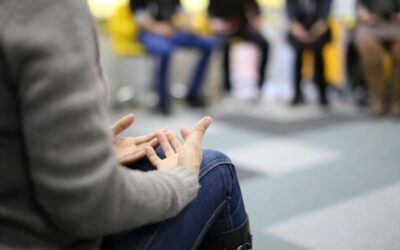Helping Children Heal: What Is Children of Divorce Therapy?
When parents go through a divorce, it can be hard for kids. They may feel sadness, anger, fear, or even guilt. These feelings are normal, but kids sometimes need extra help. That’s where children of divorce therapy comes in. This kind of therapy gives children a safe space to talk about their feelings and learn ways to cope.

Why Do Kids Need Therapy After Divorce?
A child’s mind is still growing. When big changes happen—like parents separating—it can feel scary. Some children may show their feelings through behavior changes. Others may hide their pain. Kids might:
-
Cry often
-
Feel angry or act out with aggression
-
Have trouble with homework or lose attention in class
-
Struggle with mood swings
-
Feel guilt, thinking the divorce is their fault
Therapy helps kids understand these feelings. It also helps with building social skills and learning how to talk about their emotions.
Common Feelings Kids Have After Divorce
Every child is different, but many share the same feelings, such as:
Sadness and Grief
Kids may miss their old family life. They might feel grief, like when someone close has gone away.
Anger and Aggression
They might feel anger about the situation. This can show up as yelling, hitting, or being mean to others.
Guilt and Fear
Some children think the divorce happened because of something they did. They may feel guilt or fear that one parent might leave too.
How Therapy Helps Kids Cope
Therapists use special tools to help children feel better. These tools are made for their age and feelings. Some of these include:
Storytelling
Telling or listening to stories can help children share their own experiences in a fun way.
Drawing and Play
Drawing pictures or playing games lets children express emotions without needing to use big words.
Role Playing
This helps kids practice how to talk about feelings or deal with problems.
Stress Management
Therapists teach children how to calm their body and mind with breathing, counting, or quiet time.

What a Licensed Professional Therapist Does
A licensed professional knows how to work with children and families. They will:
-
Talk to both the child and parents
-
Do an evaluation to understand the child’s needs
-
Create a program that fits the child
-
Offer emotional support
-
Help improve family communication
-
Talk with schools if needed
Some therapists also work with divorce counseling or mediation to help the whole family.
The Role of Family in Healing
Children don’t heal alone. Families play a big role. When parents, grandparents, or even community members work together, children feel more safe and loved.
Tips for parents include:
-
Keep talking with your child about their feelings
-
Don’t fight in front of the child
-
Stick to routines to give the child space and comfort
-
Talk kindly about the other parent
-
Work with your therapist for understanding and healing
What Are Intervention Programs?
An intervention program is a type of help that starts when problems show up. These programs often use education, counseling, and support groups. They are guided by licensed professionals who understand family law and children’s health needs.
These programs might offer:
-
Group therapy for kids
-
Parent classes to learn coping skills
-
Divorce counseling for families
-
Help with child custody plans
-
Stress management tools
Education Programs for Families
Education programs teach both kids and parents how to live well after a divorce. These can include:
-
Teaching parents how to talk to their kids about divorce
-
Helping kids understand that they are not to blame
-
Giving information about how to handle strong feelings like anger, fear, and grief
These programs are based on research and real family experience. They help improve how kids do in school and in life.
How Law and Therapy Work Together
Sometimes family law becomes part of therapy. If a court is deciding child custody, a professional therapist might share their evaluation. This helps judges make the best choice for the child.
Therapists may also work with mediation experts to help parents agree on a plan. The goal is always the child’s health and emotional support.
Building a Safe Space for Healing
A safe space means a place where kids feel okay to talk, share, and feel all their feelings. This space might be:
-
A cozy therapy room
-
A quiet corner at home
-
A school counselor’s office
In this space, kids can heal, grow, and learn new ways to deal with divorce and change.
What to Expect in a Therapy Program
When a child begins children of divorce therapy, the family usually meets with a licensed professional to learn more. This first step includes:
-
Evaluation – Learning about the child’s mood, behavior, and feelings
-
Goals – Setting clear goals like handling anger or doing better in school
-
Support – Making sure the child has emotional support at home and school
-
Activities – Using fun and healing tools like games, art, and storytelling
When More Help Is Needed
In some cases, children may need more than regular therapy. Some signs include:
-
Trouble sleeping or eating
-
Talking about wanting to hurt themselves
-
Ongoing aggression or fear
-
Past or current sexual abuse concerns
In these cases, more professional help may be needed. This can include medical care, special intervention, or even community support.

The Role of Schools and Teachers
Teachers and schools also play a big part in helping children after a divorce. They can:
-
Watch for changes in the child’s behavior or learning
-
Offer extra attention or help with homework
-
Work with the child’s therapist
-
Make sure the child has a support system during the school day
Schools may also have their own programs to help kids after family changes.
Seeking Treatment? We Can Help!
We work with PPO Out of Network Health Insurance Policies
If you or a loved one are struggling with mental health challenges or substance abuse, reach out to Mountain Sky Recovery today. Our team of compassionate professionals is here to support your journey towards lasting well-being. Give us a call at 951-498-5412. Visit SAMHSA for more information.



